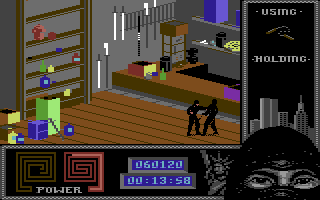Review: WALL•E
Ja tvoi sluga. Ja tvoi Rabotnik
Very occasionally, cinema goers are lucky enough to witness a ‘wow’ moment—not a film that merely makes you think it was good, but one where you know you just experienced an event, a film that has the potential to change a genre utterly. Pixar’s WALL•E is one such film.
Superficially, WALL•E is a film about a curious little waste-disposal robot, tasked with cleaning up a toxic Earth (whose humans have nipped off in a spaceship while the work’s being done for them), who looks a lot like a squat Johnny 5. Kids will love the (surprisingly brave) initial dialogue-free section of the film, which shows WALL•E going about his business, building skyscrapers of trash, and playfully cherry-picking bits and pieces to take home and categorise (a memorable moment shows WALL•E confused by a spork, and, logically enough, after hovering it over his small pile of spoons and a collection of forks, he places it between the two) and a string of exciting, high-paced action sequences that arrive later.
However, look past the child-friendly sheen and you have the greatest example to date from Pixar of a film that works on several levels. The Earth that WALL•E is trying to tidy appears to have been under the thumb of megacorporation Buy n Large, intent on driving the population into a constant consumerist frenzy. And when later in the film you chance upon the fate of the exiled humans, Pixar’s cartoon-like presentation barely masks a fierce satire on consumerism, apathy, laziness, and a generation’s desire to experience the world via purely virtual means, rather than actually living life and making genuine connections.
Of course, WALL•E is the antithesis of this. Despite being a robot, he has so much warmth and love to give, and yet he’s spent hundreds of years slowly cleaning up the Earth as his fellow droids gradually malfunctioned around him, thereby leaving him utterly alone. When the possibility of companionship arrives, he grasps it utterly, first with a scavenging cockroach, and then with EVE, a robotic probe whose function is to determine whether Earth is habitable. (With EVE’s form being sleek and white, I imagine it’s all Pixar could do to stop themselves plonking an Apple logo on her.)
The fact that every one of these components works brilliantly is testament to the talent within Pixar’s walls. The messages aren’t heavy handed, but will resonate with those who chose to engage with them. The animation is, perhaps unsurprisingly, first-rate, with wonderful designs, direction and characterisation. But it’s WALL•E and EVE’s story that’s the most riveting. And although you might feel foolish at welling up at the plight of two robots—animated robots at that—it’d take a heart of steel to not be captivated by this genuinely heartwarming and hopeful tale about loneliness and how important it is to make connections.

WALL•E seriously considers peeling off and reapplying all the stickers, because life’s just too short.
Comments Off on Review: WALL•E



